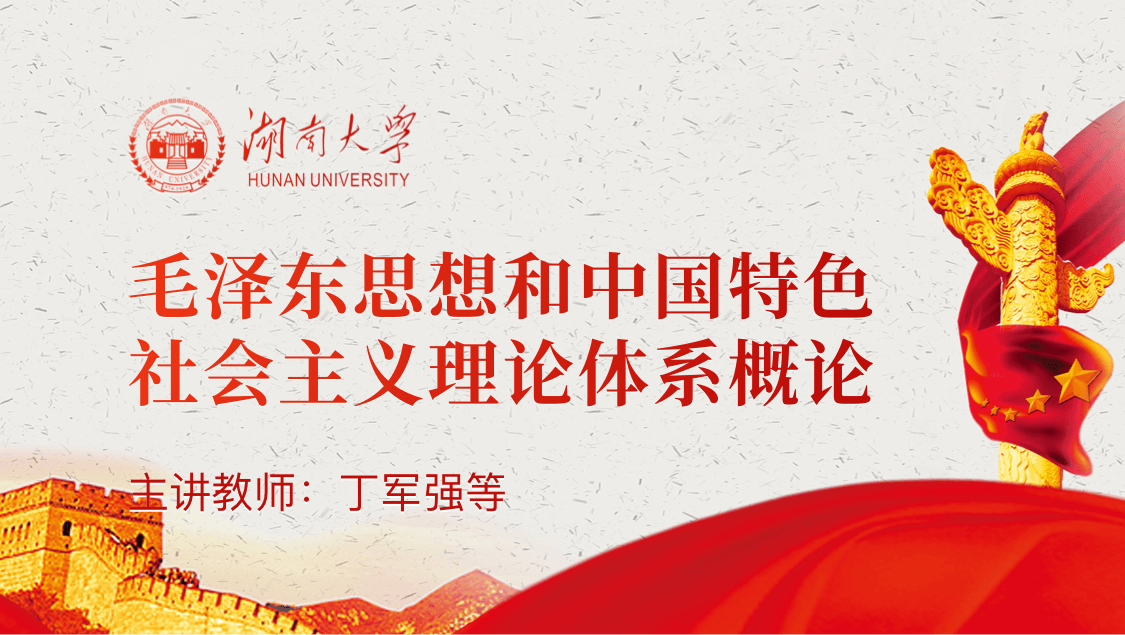
当前课程知识点:Culture and Tourism > Week 5: Sustainable Indigenous Tourism > 5.1 Indigenous Tourism > 5.1.2 World heritage and indigenous peoples
返回《Culture and Tourism》慕课在线视频课程列表
返回《Culture and Tourism》慕课在线视频列表
下一节,世界遗产和土著人民
今年,世界遗产的一个总体框架旨在
给予这些地方最高级别的保护
也是作为国际社会
对它有效保护的责任
当我们看世界遗产的时候
因为很多人都很熟悉它,所以有时候只能看到它的一面
《世界遗产公约》是1972年在巴黎建立的
这些提名基于与突出普遍价值有关的十项标准
目前世界约有1073处遗产,其中832处文化遗址,206处自然遗产和35处双遗产
有三个咨询机构负责自然遗产保护
由世界自然保护联盟要求他们对自然遗产进行保护
除了不对文化遗产进行保护之外
世界自然保护联盟还混合遗产开展工作
其总部设在罗马的国际文化财产保护及修复研究中心
是一个与管理相关的培训机构
负责监督单独的遗产
进入可持续旅游业和世界遗产地
2011年,巴黎世界遗产中心成立了
一个可持续旅游项目
中心目前的工作重点和活动内容是
过度旅游与增强社区效益
就这些景区而言
必须承受大量的游客数量和环境、社会和经济影响
确保位于那里的世卫组织自身
需要获得尽可能最大的经济效益
通过这个实体,该项目还被开发为
联合国教科文组织世界遗产可持续旅游工具包
因此,它是一个在线文档集
涉及如何使用、开发和管理各个站点的可持续旅游
现在,世界遗产中心正在开发
它所说的游客管理评估工具
也就是说,在测试的基础上
将有大约20个站点与之合作
来确定它们的可持续性水平
从经济、社会、环境和文化的角度
In the sense to identify
where the key areas of concern and the areas that can be addressed,
not only from that site, but across UNESCO world heritage network as well.
就土著世界遗产地点生物多样性保护目标而言
他们试图专注于应用传统的环境知识或叫做TEK
而TEK背后的理念是
如何成功地管理土地几十万年
让成群的动物和农作物能够茁壮地生长
在这种情况下,有一个需要经过时间考验的问题
就是如何运用各种方法来维护这些地区的景观、文化和自然
这以某些活动的形式出现
比如持续的遗传性收获实践,维持当地物种的健康
在这种情况下,水牛在这里很普遍很难到
在加拿大西部也很普遍能看到
这些景观
已经维持了几千年或几万年
就像这里的冬天和夏天
这是北极光的一个例子
它在加拿大北部的景观中非常有名
这可能是我提及的在加拿大的过境公路
这可能是我最喜欢的世界遗产之一
不仅因为它的名字,而且它本身也是一个非常可爱的景观
这被称为是在阿尔伯塔省的水牛头部撞击跳跃
这是一个非常著名的遗址
基本上土著人
在收获水牛的时候
会在悬崖前形成一个猎杀点
他们会鼓动水牛从悬崖边上跑下去
这样会很快就杀了它们
然后收获它们的肉,皮毛,骨头,所有的东西
“撞头”的为人们熟知是
因为有个小男孩非常好奇
水牛从边上跳过去是什么样子
他站在猎杀地点的底部
他最后头撞了过去
这就是现在的遗址
它是一个演绎点
这里是捕杀区
但它是一个世界遗产
因为它是北美最大和保存最完好的
捕杀野牛的这种类型的遗留地点
所以在80年代被命名为世界文化遗产
现在我们开始研究这样一个遗址的文化旅游目标
就是提供一个价值主张
以对抗指定的因素的破坏
所以从这个意义上说
这是一个敏感的文化区
因为在那里发生的活动,在这个区域的景观内
有一些秘密的设置的一些地方
当地人对那里非常小心地保护
确保没有太多
不属于那个部落或背景的人过去
旅游业的做法也鼓励其他收入来源
来维持当地社区
在许多情况下,它们并不是经济发展的好机会。
旅游业,至少在每年的基础上
它可以为委员会本身、供应商、导游、维修人员
以及在这个遗址上工作的其他人提供某种可持续的收入
还支持维护文化景观和传统
所以在这里产生的收入可以用在工艺
建筑技术,其他方面,否则可能会失去
因为没有收入或需要
继续加强这些类型的文化活动
最后,谈谈真实性和完整性的意义
整个加拿大只有这么多这样的自然景观
你要努力确保你能尽可能多地维护遗址
少开发,少改变
并继续反映它以前的样子
和传统使用方式
世界遗产进程与世界自然保护联盟合作的结果之一是
有一种观点认为土著遗址在文化遗产中没有得到很好的反映
因为事实上
对于世界上许多不同的地方,无论是加拿大,中国还是其他地方
许多不同的人把他们自己看作是土地的一部分
同时土地也对他们整个文化的产生关键影响
因此,一个方面是
在2014年在卡塔尔多哈举行的世界遗产委员会会议的
混合遗产提名中
即对于一些混合遗址来说,在世界自然保护联盟提交的提名报告
和国际古迹遗址理事会的报告中还存在一些问题
当他们把这两份报告汇集在一起时,会有一些非常矛盾的信息
因此,在你如何看待一个遗址,如何构思和如何向前发展方面
有一些问题值得关注
需要有一个更好地反映
自然和文化价值观的提名考虑
从本土或其他角度来看
他们正在努力获得世界遗产的承认
因此,有一个共同的协调方法
命名和咨询要求从混合世界遗产地
由此,电子商务之间产生了一个联系的实践项目
我的想法是开发一种被称为自然文化的东西
或文化自然之旅,它可以更好地反映出
利用自然和文化特征来
管理和提名世界遗产的方式
在过去的两年中,IUCN和ICOMOS
分别在2016年夏威夷的Honolulu和2018年12月的德里举行
大会上支持了最近的一些活动,随后对此进行了讨论
-1.1 Introduction course outline and UNESCO World Heritage Program
--1.1.1 Introduction of culture and tourism course outline
--1.1.2 Introduction of UNESCO World Heritage Program(1)
--1.1.3 Introduction of UNESCO World Heritage Program(2)
-1.2 Cultural Heritage-1
--1.2.1 The meaning of culture heritage
--1.2.2 Criterion(i): masterpiece of human creative genius
--1.2.3 Criterion(ii): exhibit important interchange of human value
--1.2.4 Criterion(iii): bear a unique or at least exceptional testimony
--How can the public understand the importance of heritage?
-1.3 Cultural Heritage-2
--1.3.1 Criterion(iv): an outstanding example in human history
--1.3.2 Criterion(v): represent a culture or human interaction with environment
--1.3.3 Criterion(vi): associated with living traditions of outstanding universal significance
-1.4 Natural Heritage
--1.4.1 Natural heritage features, formations and criterions
--1.4.2 Cases studies of natural heritage
--Cultural landscape meanings: The case of West Lake, Hangzhou, China
--How to access heritage of your hometown?
-2.1 Mixed Culture and Natural Heritage
--2.1.1 Mixed heritage operational guidelines and cases (1)
--2.1.2 Mixed heritage operational guidelines and cases (2)
--2.1.3 Mixed heritage operational guidelines and cases(3)
-2.2 Authenticity, Integrity and Cultural Routes
--2.2.1 How to determine authenticity and integrity
--2.2.2 Heritage routes and heritage canals (1)
--2.2.3 Heritage routes and heritage canals (2)
--What do you think about cultural heritage categories?
-2.3 Special Heritage and Sustainable
--2.3.1 Physical remains of the history of technology and industry
--2.3.2 Transboundary Heritage, Serial Heritage, Serial/Transnational Heritage
--2.3.3 Intangible cultural heritage
--2.3.4 UNESCO World Heritage and Sustainable Tourism Programme
--Recovering the Memory of Ourselves for the Sustainable Cites
--Week 2 quiz
--What do you think about cultural heritage categories?
-3.1 The Australia’s Heritage System and Sydney Opera House
--3.1.1 The Australian Heritage System
--3.1.2 Case Study: The Sydney Opera House
-3.2 Role of the ISCCL and Cultural Landscape (1)
--3.2.2 Uluru-Kata Tjuta National Park
--3.2.3 Honghe Hani Rice Terraces
-3.3 Role of the ISCCL and Cultural Landscape (2)
--3.3.1 West Lake cultural landscape (1)
--3.3.2 West Lake cultural landscape (2)
-3.4 Rural Landscapes as Heritage
--3.4.1 ISCCL Principles Concerning Rural Landscapes as Heritage
-3.5 Case Study: Mongolian Altai
--3.5.1 Nature Culture Integration & the Mongolian Altai(1)
--3.5.2 Nature Culture Integration & the Mongolian Altai(2)
--Week 3 quiz
--Discussion: What do you think is the role of ISCCL?
-4.1 Introduction of the Meaning of 'landscape’
--4.1.1 Brief introduction of landscape and culture
--4.1.2 The conceptual framework of cultural landscape
-4.2 Landscape Values
--4.2.1 The word “landscape” itself and differences in Western, Eastern
--4.2.2 Cultural significance for heritage source
--Discussion: What do you think the cultural landscape attracts you?
-4.3 Reading the Landscape: Identification and Assessment
--4.3.1 Planning model for heritage conservation management policy
--4.3.2 Cultural landscape resources evaluation steps
--Article: Cultural mapping: Intangible values and engaging with communities with some reference to As
-4.4 Case Study: Wingecarribee Historic Landscape
--4.4.1 Case study:Wingecarribee historic landscape study(1)
--4.4.2 Case study:Wingecarribee historic landscape study(2)
--Week 4 quiz
--Discussion: What should we do to strengthen the protection of cultural landscape?
-5.1 Indigenous Tourism
--5.1.1 Indigenous tourism background
--5.1.2 World heritage and indigenous peoples
--5.1.3 Tourism issues at Canadian indigenous world heritage sites
--Discussion: What challenges indigenous World Heritage faces?
--Article: State conceptions of indigenous tourism in Chile
-5.2 Case Study and Conclusion: Great Expectations for Tourism
--5.2.1 Case study Pimachiowin Aki
--5.2.2 Conclusions:Great Expectations for Tourism
--Disussion: Do you have any experience of indigenous tourism?
--Week 5 quiz
-6.1 The Definition of Heritage in Heritage Performance Study
--6.1.1 The definition of heritage in heritage performance study
--6.1.2 Heritage performance and meaning making
--6.1.3 Two key issues emerging from qualitative study
-6.2 Heritage Performance - Evidence from Australia, England and USA
--6.2.1 Heritage performance - reinforcement
--6.2.2 Heritage Performance - inter-generational communication and social values
--6.2.3 Heritage performance - recognition and respect
--6.2.4 Heritage performance - education
--Article:Theorizing museum and heritage visiting
-6.3 The Conclusion of Heritage Performance
--6.3 The conclusion of heritage performance
--Week 6 quiz
--Discussion: What kinds of heritage performances have you learned in this week?


